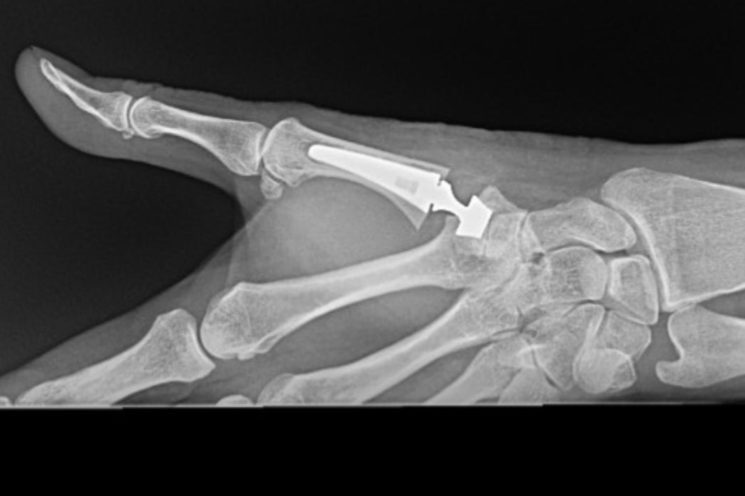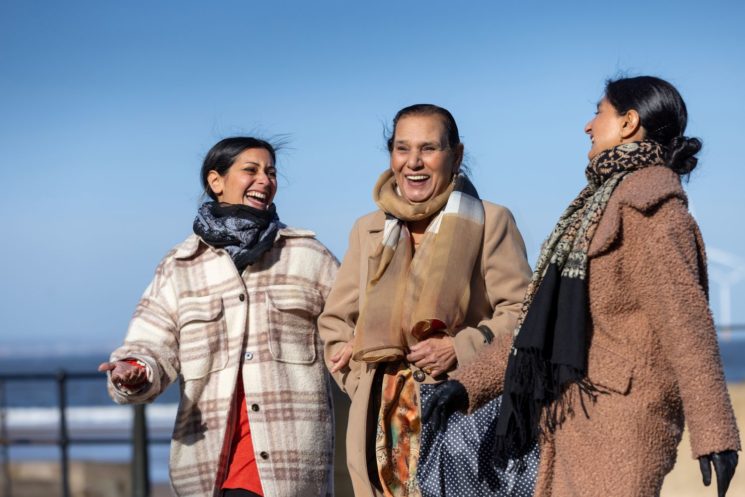This article is intended to give a brief overview of, and some pointers to aid in the diagnosis of the most important and the most common causes of knee pain in children (but not including bony injuries which are beyond the scope of this short article).
Knee pain is commonly attributed to "growing pains" which should really only be a diagnosis of exclusion, and only if the symptoms fit a fairly classical chronic and intermittent pattern of usually night pain with no other disturbance.
Knee pain in children can have a multitude of causes, but it is important to be aware that hip pathology such as Perthes' disease and slipped upper femoral epiphysis commonly present as knee pain. This can lead to a dangerous delay in diagnosis, as a set of normal knee X-rays may lead to false reassurance.
Diagnosing the cause of knee pain in a child may also be difficult as symptoms may be vague, and they often find it difficult to describe their pain. Anxiety about the possible treatment options may also lead them to play down their symptoms, although parents are usually very helpful in this regard.
Osteomyelitis and septic arthritis
As with any joint pain, it is important to exclude infection. The child will be unwell with a short history of a temperature, knee pain, a limp or inability to walk, perhaps swelling (an effusion), and be systemically unwell. There is often an association with minor trauma, which should not distract from the possibility of infection as a cause of knee pain.
Referral should be immediate. Trapped pus within the joint causes rapid and irreversible destruction of articular cartilage, and prompt diagnosis and surgical drainage is vital. Intravenous antibiotics are required until the clinical picture has settled (usually until the CRP is normal) followed by oral antibiotics for a total of two to six weeks.
Tumours
Tumours around the knee are most commonly benign, and in this case pain may be the only symptom with little else to find clinically except perhaps some muscle wasting and tenderness. Pain which occurs at night and is relived by aspirin is classic of an osteoid osteoma, but night pain and rest pain may be a more worrying sign of a neoplastic lesion.
Malignant tumours such as osteosarcoma, although rare, have a predilection for occurring around the knee joint. They are usually associated with a short history of worsening pain, rest pain, and a mass, with bony destruction and soft tissue reaction and swelling. Again, tumours around the hip may present with knee pain. A plain radiograph should be the first line of investigation.
Reactive arthritis and inflammatory arthritis
As in adults, reactive arthritis can occur in children, complicating viral infections. The differential diagnosis is septic arthritis and inflammatory arthritis. There is usually a clear history of a preceding viral infection.
Inflammatory arthritis usually has a chronic presentation with a limp more common than acute pain. Discomfort is characteristically felt as morning stiffness, or stiffness after prolonged periods of immobility. Children are often able to undertake strenuous activity later in the day. A warm environment improves symptoms. Other joints may be involved. Examination often reveals synovial thickening in the suprapatellar pouch with muscle wasting and possibly an effusion.
Anterior knee pain and patellofemoral maltracking
Anterior knee pain is very common and is at the mildest end of the spectrum of patello-femoral symptoms, the most severe of which is patellar subluxation and dislocation.
Anterior knee pain describes pain which is felt around and under the patella, is worse following prolonged periods of sitting (otherwise known as cinema knee) and on climbing stairs. It is most common in adolescent girls and is usually improved or cured by VMO (vastus medialis obliqus) strengthening exercises, which aim to realign the strong lateral pull of the vastus lateralis on the patella.
At the other end of the spectrum is recurrent dislocation and subluxation. These patients require referral as there are often underlying soft tissue or bony abnormalities.
Osgood-Schlatter’s disease
Osgood Schlatter’s disease is a disorder of the formation and growth of the proximal tibial apophysis occurring in adolescents during the time of its ossification. Patients present with anterior knee pain centred over the tibial tubercle which comes on with exercise, with focal tenderness and swelling at this point. It is relieved by rest. X-rays show fragmentation of the apophysis, but are not necessary to make the diagnosis as it is usually obvious clinically. Treatment is symptomatic with rest, ice, analgesia, and sometimes physiotherapy. Cessation or reduction of sporting activities depends on the individual patient and their pain level.
Osteochondritis dissecans
This condition is caused by necrosis of a focal area of subchondral bone, most commonly affecting the lateral part of the medial femoral condyle. When the overlying cartilage loses its supporting structure, a fragment may be displaced into the joint as a loose body. Repetitive micro-trauma is thought to be an important initiating factor. Symptoms are chronic, often vague, and include activity related pain, stiffness after rest, catching, or giving way.
Radiographs are usually diagnostic if "tunnel views" are obtained. An MRI scan is used to assess severity and guide treatment. In general, girls under 11 and boys under 13 years can be managed conservatively and will often settle with a period of restriction of activity. In older children, the prognosis is more guarded and arthroscopy is usually indicated, when the lesion can be drilled to encourage healing, reattached, or loose bodies removed.
Soft tissue knee injuries
Sporting injuries in children are becoming increasingly common with participation in aggressive and competitive sports occurring at a younger age.
Immediate swelling following an injury is highly suggestive of a haemarthrosis, caused by either a fracture within the joint capsule, or an intra-articular ligament rupture such as the anterior cruciate ligament. The delayed onset of an effusion (two hours plus) following injury is more suggestive of a meniscal tear.
Plain radiographs are important to exclude a bony injury, at the very least AP and lateral views, and if a patellar dislocation is suspected then skyline views as well. If these are normal, immediate management should include a tubigrip, crutches, ice, analgesia, and anti-inflammatories and early specialist review.
Depending on the persistence of symptoms and signs, an MRI scan may be indicated.
Acute patella-femoral dislocations
Acute dislocation of the patella is often a painful, trauma-related event. Urgent referral is required. Reduction can most often be performed closed with analgesia and sedation, but can sometimes require general anaesthetic or operation, particularly if there is avulsion of a bony fragment from the medial facet of the patella or the lateral condyle of the femur.
After reduction the knee will be immobilised in a brace or occasionally in plaster. Physiotherapy is started early on order to minimise muscle wasting.
Anterior cruciate ligament injury
Although ACL injuries are less common in children than adults – one per cent of all ACL injuries occur in children – they must not be overlooked.
Most injuries occur during sport and are often the result of abnormal twisting, landing, or hyperextension.
Assessment is as for adult injuries. However, studies have shown a poor prognosis for the conservatively managed paediatric ACL rupture, probably due to an increased risk of medial meniscal injury in the unstable knee, which in turn increases the risk of early degenerative arthritis. Thus, the management approach is somewhat more aggressive in children, and even children with relatively minor symptoms should be counselled to consider ACL reconstruction.
In those approaching skeletal maturity, surgical reconstruction can use techniques as for adult injuries. However, a problem occurs in young children because these conventional techniques would involve the placing of hardware in tunnels across the physes (growth plates), increasing the risk of growth arrest.
In these young children, alternative methods of reconstruction are required. It is our opinion that reconstruction should be performed in dedicated paediatric units by experienced surgeons in order to minimise the risks of failure and of growth disturbance. Pre- and post-operative physiotherapy are vital to ensure successful rehabilitation.
Meniscal tears
As with ACL injuries, meniscal injuries are less common in children than adults. They most often result from a twisting injury to the knee, and are more common when the ACL has been injured. Approximately 0.5 to 1 per cent of children have a structural predisposition to lateral meniscal tear, known as a discoid lateral meniscus which is thicker and covers more of the tibial plateau than it should do – normally a semi-lunar shape.
Symptoms include visible and palpable "clunking" and sometimes pain, particularly if torn. The incidental finding of a discoid meniscus, for example on an MRI scan done for other reasons, does not require any intervention. However, symptoms of pain, or the presence of a tear usually requires arthroscopic debridement +/- meniscal repair.
Some peripheral tears of the menisci have the potential to heal with conservative management and restriction of activity, however most will require operative intervention with arthroscopy. The aim is to preserve as much of the meniscus as possible by suturing, as children’s menisci have a good potential to heal and excising a large portion of the meniscus can predispose to early degenerative changes. This decision can only be made at operation. Concurrent reconstruction of an injured ACL seems to confer a positive prognosis for healing of repaired menisci, improving success rate from 75 to 85 per cent.
Rehabilitation includes bracing and specialised physiotherapy and again we feel that these procedures should take place in dedicated units experienced in paediatric knee surgery.
About the consultants
Mr Chinmay Gupte MA PhD FRCS (Tr and Orth) BMBCh is a Paediatric Knee and Trauma Surgeon at Cromwell Hospital and within the Imperial College Healthcare NHS Trust.
Miss Sally Tennant BSc MBBS FRCS FRCS (Tr and Ortho) is Paediatric Orthopaedic Surgeon at the Royal National Orthopaedic Hospital NHS Trust.



